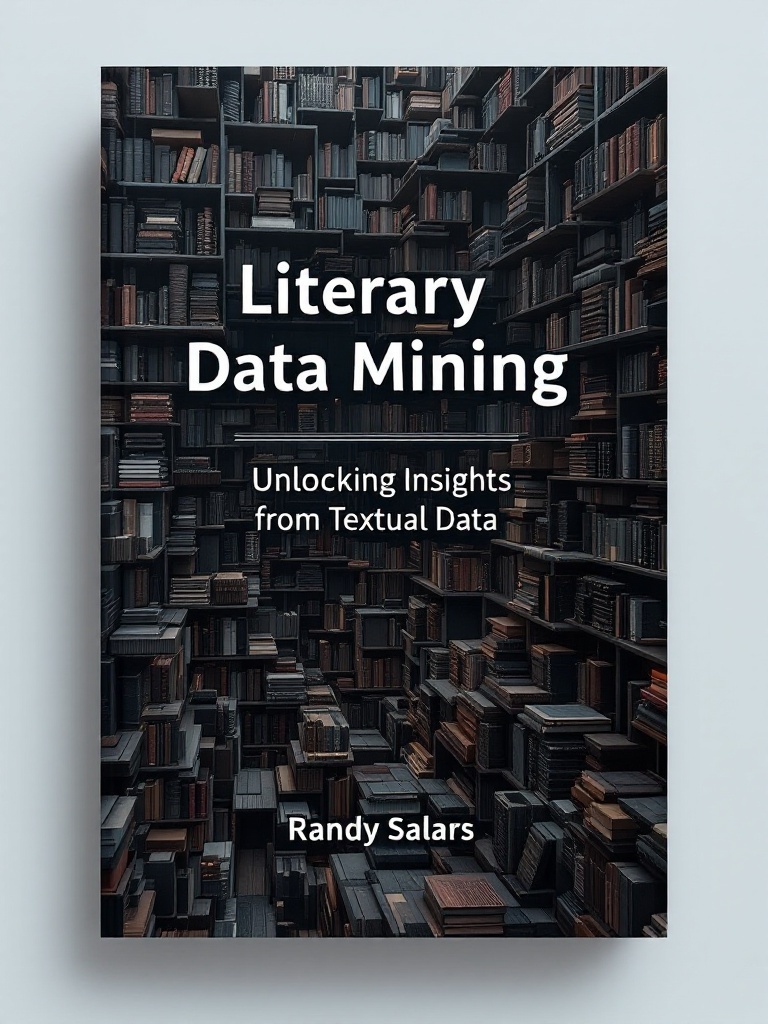Literary Data Mining: Unlocking Insights from Textual Data
$0.00
Unlock the hidden treasures within text with “Literary Data Mining: Unlocking Insights from Textual Data.” This groundbreaking book serves as your essential guide to harnessing the power of data mining in the realm of literature, offering a unique blend of theory, practical tools, and real-world applications.
Dive deep into innovative techniques that reveal patterns, themes, and sentiments from vast textual datasets, whether you’re a researcher, data scientist, or literary enthusiast. Each chapter is packed with illustrative case studies and step-by-step instructions, making complex concepts accessible and actionable.
What sets this book apart? It bridges the gap between data science and literary analysis, empowering you to transform qualitative insights into quantitative results. Unleash the potential of literary data mining and enrich your understanding of texts like never before. Don’t miss your chance to elevate your analytical skills—grab your copy today!
Description
Unlock the Secrets Hidden in Your Textual Data!
Discover the Power of Literary Data Mining with Randy Salars’ Groundbreaking Book
Are you ready to elevate your understanding of textual data? “Literary Data Mining: Unlocking Insights from Textual Data” is the ultimate guide for anyone eager to harness the untapped potential of the written word. Whether you’re a researcher, a data analyst, or simply a curious reader, this book will transform the way you perceive and interact with text. Unlock the insights that lie just beneath the surface!
Why You Need This Book
– Elevate Your Skills: Learn advanced techniques for extracting meaningful patterns and insights from vast amounts of text, enabling you to make data-driven decisions.
– Stay Ahead of the Curve: In an increasingly data-centric world, equip yourself with the knowledge that sets you apart from the competition.
– Practical Applications: Apply literary data mining techniques across various fields, from marketing to academia, and watch your understanding deepen.
– Empower Your Creativity: Uncover new perspectives and ideas that can inspire your personal or professional projects.
What You’ll Learn
In “Literary Data Mining,” you will:
– Understand the Fundamentals: Get to grips with the basic concepts of data mining and how they apply to literary texts.
– Master Analytical Tools: Discover the tools and techniques that can help you analyze complex datasets with ease.
– Explore Case Studies: Delve into real-world examples that illustrate the power of literary data mining in action.
– Develop a Critical Eye: Learn to interpret data thoughtfully and draw meaningful conclusions that can drive your work or research forward.
Meet the Author
Randy Salars is a seasoned entrepreneur, digital strategist, and former U.S. Marine, bringing over 40 years of leadership and business expertise, sharing his knowledge to inspire success across traditional and digital industries. His unique blend of practical experience and academic insight makes him the perfect guide for navigating the intricate world of literary data mining.
What Readers Are Saying
“Randy Salars has made data mining accessible and engaging! His insights are transformative.”
— Jessica M., Data Scientist
“This book opened my eyes to the potential of textual analysis. A must-read for anyone in the field!”
— Mark T., Marketing Executive
“Randy’s expertise shines through every page. I now feel equipped to tackle my own literary analyses with confidence.”
— Samantha R., Graduate Student
Ready to Unlock Insights?
Don’t miss your chance to dive into the world of literary data mining and gain actionable insights that could change your approach to text forever. Grab your copy of “Literary Data Mining: Unlocking Insights from Textual Data” by Randy Salars today!
[Purchase Now]
Transform your understanding of textual data and open the door to endless possibilities!
What You’ll Learn:
This comprehensive guide spans 168 pages of invaluable information.
Chapter 1: Chapter 1: Understanding Literary Data Mining
– Section 1: What is Literary Data Mining?
– Section 2: Historical Context of LDM
– Section 3: The Interdisciplinary Nature of LDM
– Section 4: Ethical Considerations in LDM
– Section 5: Case Study: Analyzing Shakespeare’s Works
Chapter 2: Chapter 2: Data Sources for Literary Analysis
– Section 1: Types of Literary Data
– Section 2: Digitization of Texts
– Section 3: Text Corpora and Databases
– Section 4: Text Preprocessing Techniques
– Section 5: Case Study: Building a Custom Text Corpus
Chapter 3: Chapter 3: Tools and Technologies for LDM
– Section 1: Programming Languages for Data Mining
– Section 2: Software and Libraries
– Section 3: Data Visualization Techniques
– Section 4: Machine Learning in Literary Analysis
– Section 5: Case Study: Sentiment Analysis of Modern Novels
Chapter 4: Chapter 4: Quantitative Methods in Literary Studies
– Section 1: Introduction to Quantitative Literary Analysis
– Section 2: Frequency Analysis
– Section 3: Stylometry
– Section 4: Network Analysis of Literary Texts
– Section 5: Case Study: Stylometric Analysis of 19th Century Authors
Chapter 5: Chapter 5: Qualitative Approaches to Data Mining
– Section 1: The Role of Qualitative Analysis
– Section 2: Thematic Analysis
– Section 3: Discourse Analysis
– Section 4: Case Studies and Interpretive Frameworks
– Section 5: Case Study: Thematic Analysis of Postcolonial Literature
Chapter 6: Chapter 6: Visualizing Literary Data
– Section 1: Importance of Data Visualization
– Section 2: Tools for Visualization
– Section 3: Graphical Representations of Literary Analysis
– Section 4: Interactive Visualizations
– Section 5: Case Study: Visualizing Character Networks in a Novel
Chapter 7: Chapter 7: Thematic and Trend Analysis
– Section 1: Identifying Themes in Literature
– Section 2: Temporal Trends in Literary Themes
– Section 3: Genre Analysis
– Section 4: Cross-Cultural Literary Trends
– Section 5: Case Study: Trends in Dystopian Literature
Chapter 8: Chapter 8: Machine Learning and Literary Analysis
– Section 1: Introduction to Machine Learning
– Section 2: Supervised vs. Unsupervised Learning
– Section 3: Natural Language Processing Techniques
– Section 4: Challenges and Limitations of Machine Learning
– Section 5: Case Study: Topic Modeling of Literary Genres
Chapter 9: Chapter 9: Case Studies in Literary Data Mining
– Section 1: Famous LDM Projects and Their Impact
– Section 2: Literary Networks and Historical Analysis
– Section 3: Collaborative Projects in LDM
– Section 4: Lessons Learned from Case Studies
– Section 5: Case Study: The Digital Literary Atlas
Chapter 10: Chapter 10: Future Directions in Literary Data Mining
– Section 1: Emerging Trends in LDM
– Section 2: The Role of AI in Literary Studies
– Section 3: New Paradigms in Literary Research
– Section 4: Challenges Ahead
– Section 5: Case Study: Speculating Future Literary Trends



